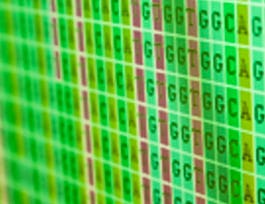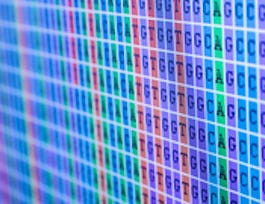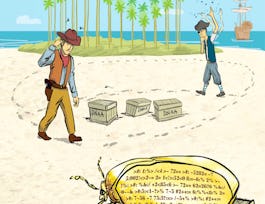Large-scale biology projects such as the sequencing of the human genome and gene expression surveys using RNA-seq, microarrays and other technologies have created a wealth of data for biologists. However, the challenge facing scientists is analyzing and even accessing these data to extract useful information pertaining to the system being studied. This course focuses on employing existing bioinformatic resources – mainly web-based programs and databases – to access the wealth of data to answer questions relevant to the average biologist, and is highly hands-on.


Bioinformatic Methods I
This course is part of Plant Bioinformatic Methods Specialization
Taught in English
Some content may not be translated

Instructor: Nicholas James Provart
108,083 already enrolled
Included with 
Course
(1,689 reviews)
98%
Skills you'll gain
Details to know

Add to your LinkedIn profile
9 quizzes
Course
(1,689 reviews)
98%
See how employees at top companies are mastering in-demand skills

Build your subject-matter expertise
- Learn new concepts from industry experts
- Gain a foundational understanding of a subject or tool
- Develop job-relevant skills with hands-on projects
- Earn a shareable career certificate


Earn a career certificate
Add this credential to your LinkedIn profile, resume, or CV
Share it on social media and in your performance review

There are 8 modules in this course
In this module we'll be exploring the amazing resources available at NCBI, the National Centre for Biotechnology Information, run by the National Library of Medicine in the USA. We'll also be doing a Blast search to find similar sequences in the enormous NR sequence database. We can use similar sequences to infer homology, which is the primary predictor of gene or protein function.
What's included
4 videos4 readings1 quiz
In this module we'll continue exploring the incredible resources available at NCBI, the National Centre for Biotechnology Information. We will be performing several different kinds of Blast searches: BlastP, PSI-Blast, and Translated Blast. We can use similar sequences identified by such methods to infer homology, which is the primary predictor of gene or protein function. We'll also be comparing parts of the genomes of a couple of different species, to see how similar they are.
What's included
4 videos2 readings1 quiz
In this module we'll be doing multiple sequence alignments with Clustal and MUSCLE (as implemented in MEGA), and MAFFT. Multiple sequences alignments can tell you where in a sequence the conserved and variable regions are, which is important for understanding the biology of the sequences under investigation. It also has practical applications, such as being able to design PCR primers that will amplify sequences from a number of different species, for example.
What's included
4 videos2 readings1 quiz
What's included
1 quiz
In this module we'll be using the multiple sequence alignments we generated last lab to do some phylogenetic analyses with both neighbour-joining and maximum likelihood methods. The tree-like structure generated by such analyses tells us how closely sequences are related one to another, and suggests when in evolutionary time a speciation or gene duplication event occurred.
What's included
4 videos2 readings1 quiz
In this module we'll take a set of orthologous sequences from bacteria and use DataMonkey to analyze them for the presence of certain sites under positive, negative or neutral selection. Such an analysis can help understand the biology of a set of protein coding sequences by identifying residues that might be important for biological function (those residues under negative selection) or those that might be involved in response to external influences, such as drugs, pathogens or other factors (residues under positive selection).
What's included
4 videos2 readings1 quiz
In this module we'll explore some of the data that have been generated as a result of the rapid decrease in the cost of sequencing DNA. We'll be exploring a couple of RNA-Seq data sets that can tell us where any given gene is expressed, and also how that gene might be alternatively spliced. We'll also be looking at a couple of metagenome data sets that can tell us about the kinds of species (especially microbial species that might otherwise be hard to culture) that are in a given environmental niche.
What's included
4 videos2 readings1 quiz
What's included
1 reading2 quizzes
Instructor

Offered by
Recommended if you're interested in Health Informatics

University of Toronto

University of Toronto

King Abdullah University of Science and Technology

University of California San Diego
Why people choose Coursera for their career




Learner reviews
Showing 3 of 1689
1,689 reviews
- 5 stars
77.35%
- 4 stars
18.50%
- 3 stars
3.25%
- 2 stars
0.35%
- 1 star
0.53%
New to Health Informatics? Start here.

Open new doors with Coursera Plus
Unlimited access to 7,000+ world-class courses, hands-on projects, and job-ready certificate programs - all included in your subscription
Advance your career with an online degree
Earn a degree from world-class universities - 100% online
Join over 3,400 global companies that choose Coursera for Business
Upskill your employees to excel in the digital economy
Frequently asked questions
Access to lectures and assignments depends on your type of enrollment. If you take a course in audit mode, you will be able to see most course materials for free. To access graded assignments and to earn a Certificate, you will need to purchase the Certificate experience, during or after your audit. If you don't see the audit option:
The course may not offer an audit option. You can try a Free Trial instead, or apply for Financial Aid.
The course may offer 'Full Course, No Certificate' instead. This option lets you see all course materials, submit required assessments, and get a final grade. This also means that you will not be able to purchase a Certificate experience.
When you enroll in the course, you get access to all of the courses in the Specialization, and you earn a certificate when you complete the work. Your electronic Certificate will be added to your Accomplishments page - from there, you can print your Certificate or add it to your LinkedIn profile. If you only want to read and view the course content, you can audit the course for free.
If you subscribed, you get a 7-day free trial during which you can cancel at no penalty. After that, we don’t give refunds, but you can cancel your subscription at any time. See our full refund policy.

